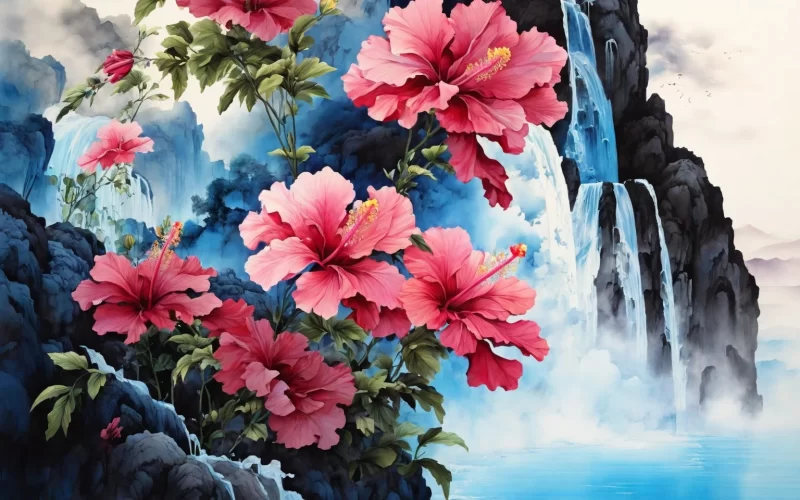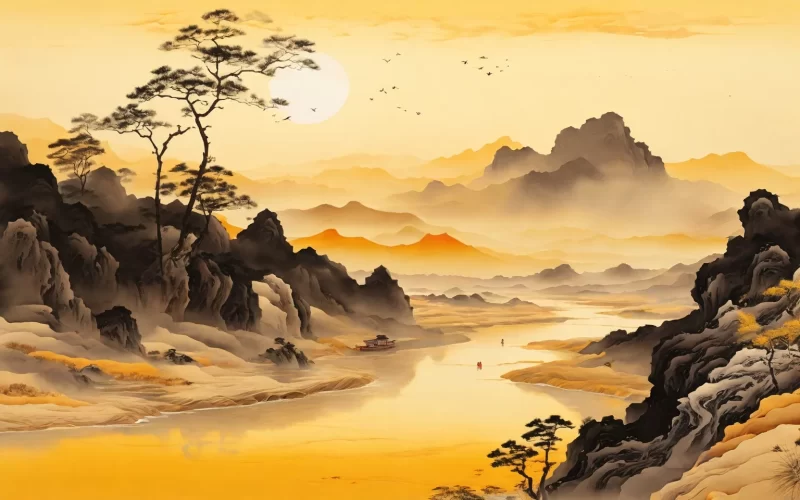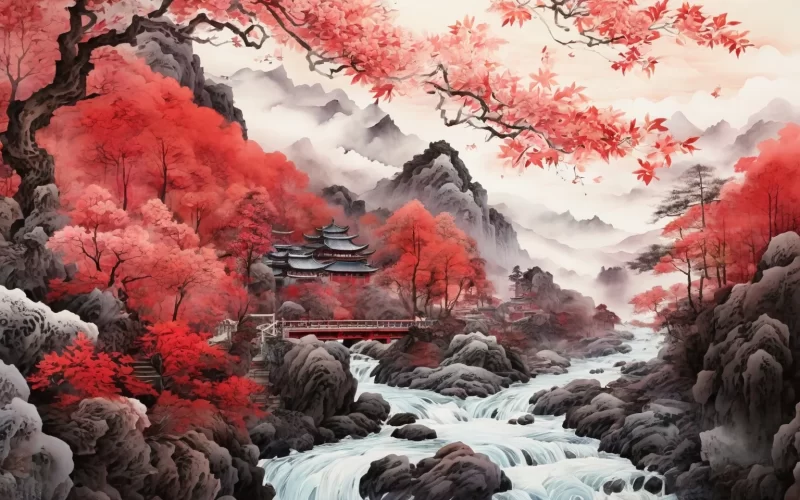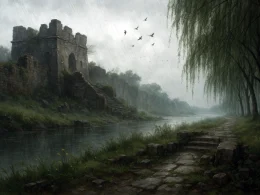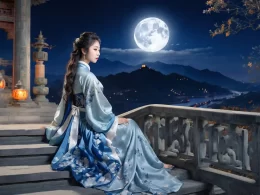The magnolia-tipped trees,
In mountains burst in flowers.
The mute brook-side house sees,
Them blow and fall in showers.
Original Poem
「辛夷坞」
王维
木末芙蓉花,山中发红萼。
涧户寂无人,纷纷开且落。
Interpretation
Composed during the High Tang period, this work belongs to Wang Wei's Wangchuan Collection, written during his later years of semi-reclusive life at his Wangchuan estate. Living between official duties and pastoral retreat, Wang Wei often expressed his serene detachment through landscape poetry. "Magnolia Dale" captures the blooming and falling of magnolia flowers in Wangchuan's mountains, merging emotion with scenery to reveal both secluded beauty and the poet's transcendent spirit.
First Couplet: "木末芙蓉花,山中发红萼。"
Mù mò fúróng huā, shān zhōng fā hóng è.
Magnolias crown the trees like lotus blooms; Crimson calyxes glow mid mountain glooms.
The poet likens magnolias to lotuses, emphasizing their scarlet brilliance crowning the treetops. This elevated blossoming, overlooking mountain streams, embodies an untainted nobility—vibrant yet never vulgar, flourishing aloft with transcendent grace.
Second Couplet: "涧户寂无人,纷纷开且落。"
Jiàn hù jì wú rén, fēnfēn kāi qiě luò.
No soul stirs by the ravine's door; Petals rise and fall in silent pour.
Transitioning to stillness, the verse reveals flowers blooming and fading in solitude, untouched by human eyes. Their natural rhythm—unswayed by admiration or neglect—mirrors the poet's philosophy: embracing life's cycles with equanimity and quiet contentment.
Holistic Appreciation
The poem traces magnolias through their full lifespan within a secluded ravine, celebrating self-sufficient beauty that needs no audience. Initial lotus imagery gives way to the "ravine's door" framing nature's private theater, where blossoms compose their silent ode to existence. This fusion of vivid botany and existential meditation creates a dual-layered masterpiece—both a luminous landscape painting and a metaphysical mirror reflecting Wang Wei's inner serenity during reclusion. The work's power stems from its paradoxical marriage of chromatic vitality ("crimson calyxes") with profound quietude ("no soul stirs"), achieving what Tang aesthetics prized as "flourishing emptiness."
Artistic Merits
Wang Wei employs chromatic contrast and kinetic stillness to heighten poetic tension. The "crimson calyxes" against "unpeopled ravine" creates visual drama, while "rise and fall in silent pour" captures nature's ceaseless motion within apparent calm. With just twenty characters, his economical brushwork achieves remarkable depth—rendering nature's tableau while suffusing it with philosophical resonance. The closing image of petals silently cascading particularly exemplifies his genius for imbuing simple phenomena with cosmic significance.
Insights
Through magnolias blooming unseen, Wang Wei crystallizes an ideal of being: to flourish authentically, indifferent to external validation. The poem invites us to cultivate such "ravine spirit" in modern life—to root ourselves in quiet self-knowledge amid society's noise, embracing our seasons of visibility and retreat with equal grace. These flowers, sovereign in their solitude, model what classical Chinese thought revered as "tranquil luminescence" (虚静)—where enlightenment shines brightest in stillness. Wang Wei's vision endures as an antidote to performative living, reminding us that true fulfillment flowers from within.
Poem translator
Xu Yuanchong (许渊冲)
About the poet
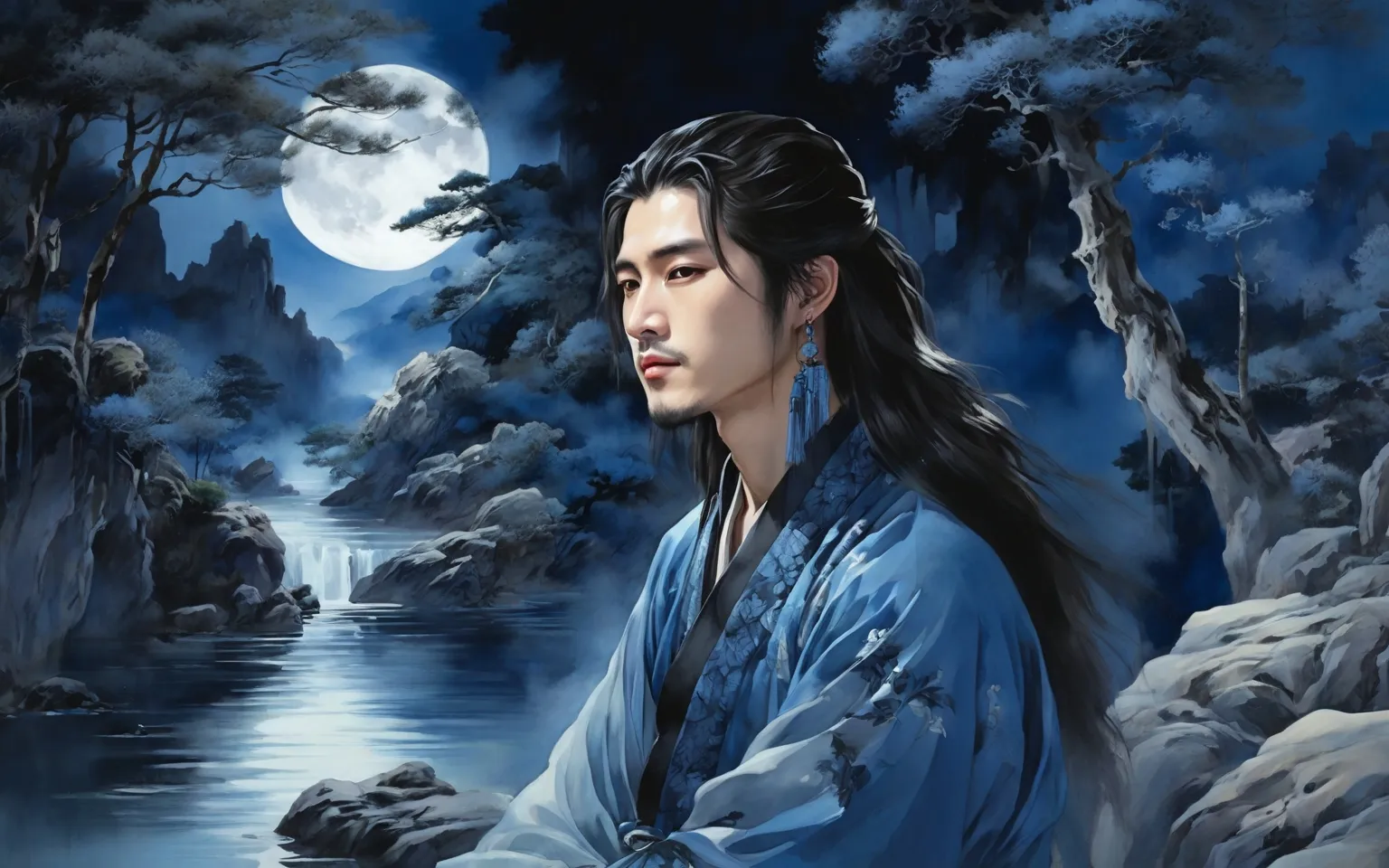
Wang Wei (王维), 701 - 761 A.D., was a native of Yuncheng, Shanxi Province. Wang Wei was a poet of landscape and idylls. His poems of landscape and idylls, with far-reaching images and mysterious meanings, were widely loved by readers in later generations, but Wang Wei never really became a man of landscape and idylls.





